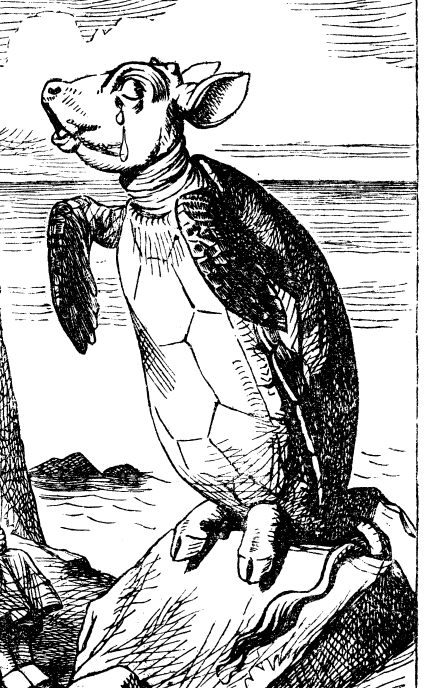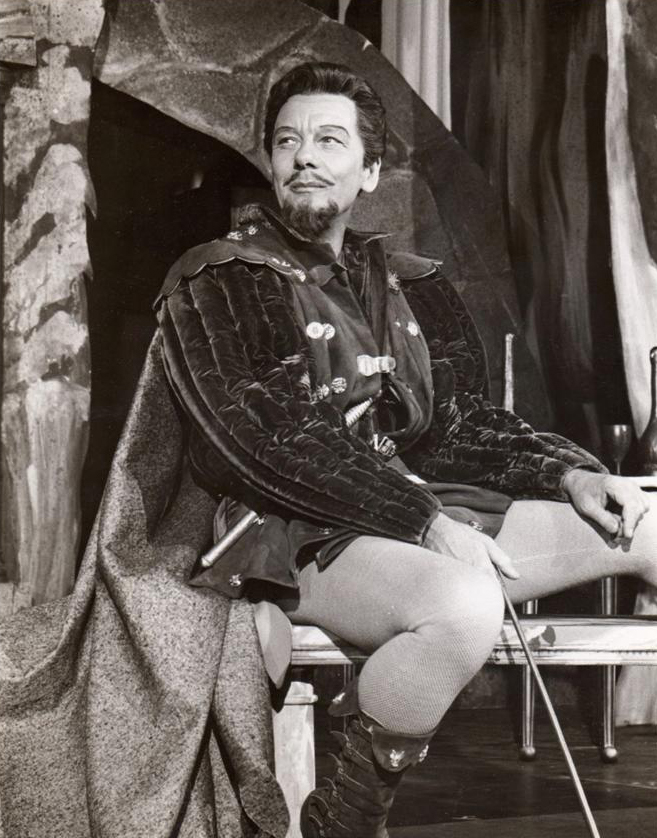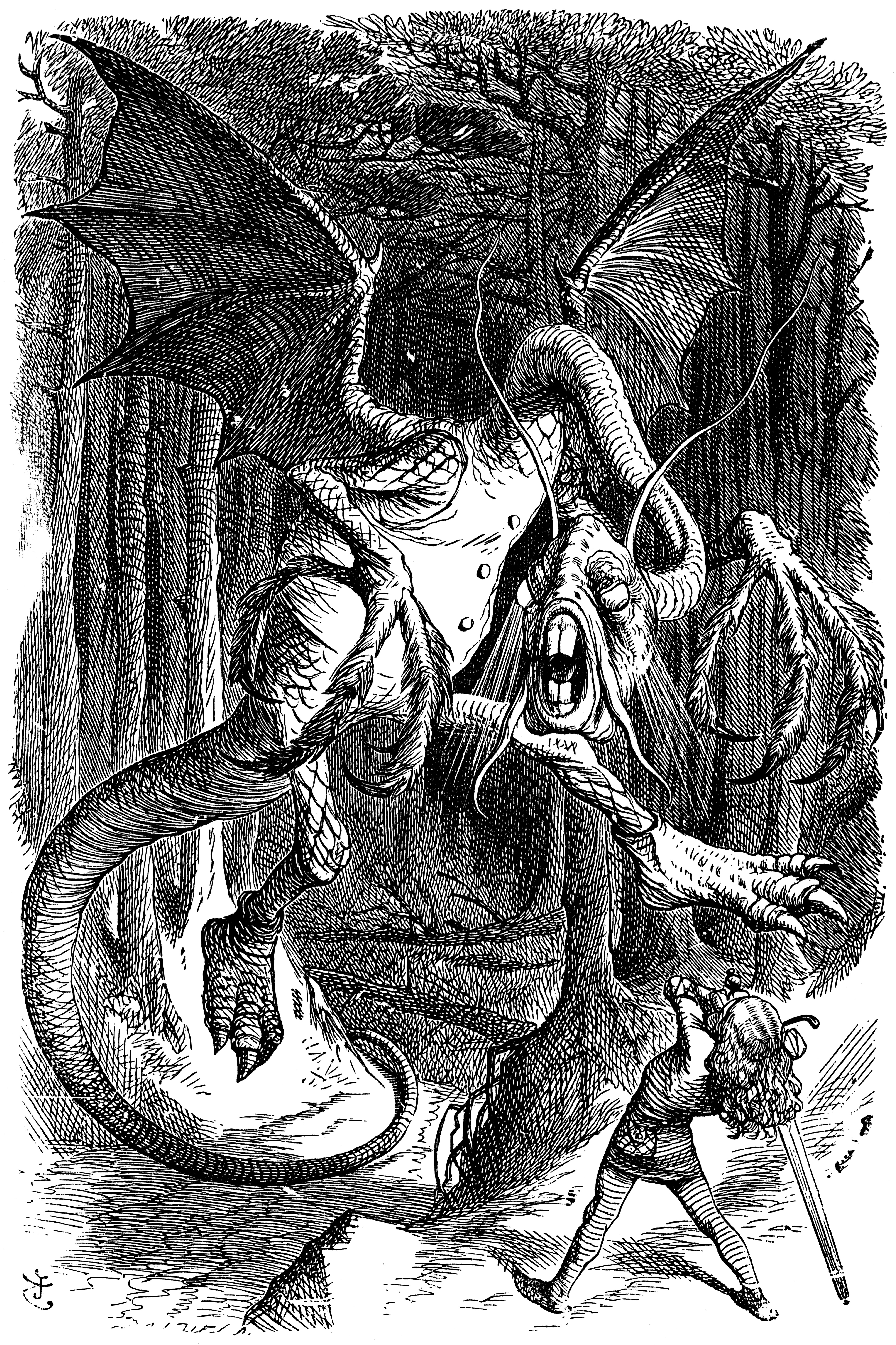|
Mock Turtle
The Mock Turtle is a fictional character devised by Lewis Carroll from his popular 1865 book ''Alice's Adventures in Wonderland''. Its name is taken from a dish that was popular in the Victorian period, mock turtle soup. ''Alice's Adventures in Wonderland'' Carroll enjoyed such puns on Victorian fashions and etiquette, and showed this frequently. The description and drawing by John Tenniel gives comedic value to the Mock Turtle, as he is clearly an assemblage of creatures, therefore not a real turtle as his name rightly suggests. Alice encounters the Mock Turtle with the Gryphon. The Mock Turtle is a very melancholic character, it is thought because he used to be a real turtle. He tells Alice his history of going to school in the sea. He says his teacher was an old sea turtle called Tortoise and when Alice asks him why he was called Tortoise if he was a turtle the Mock Turtle answers, "We called him tortoise because he taught us!" ("tortoise" and "taught us" both being prono ... [...More Info...] [...Related Items...] OR: [Wikipedia] [Google] [Baidu] |
Mock Turtle Soup
Mock turtle soup is an English soup that was created in the mid-18th century as an imitation of green turtle soup. It often uses brains and organ meats such as calf's head to duplicate the texture and flavour of the original's turtle meat after the green turtles used to make the original dish were hunted nearly to extinction. In the United States, mock turtle soup eventually became more popular than the original dish and is still popular in Cincinnati. The soup is also a traditional dish in the Lower Saxony areas of Germany, where it is considered a specialty of English cuisine. History Calf's head soups were known in England before importation of turtles began. The soup was created in response to overhunting to near extinction of the turtles needed for the original dish. Turtle soup was known as early as the 1720s after sailors returning from the West Indies brought several green turtles home with them and was popular by the mid-18th century. By the late 19th centu ... [...More Info...] [...Related Items...] OR: [Wikipedia] [Google] [Baidu] |
Gryphon (Alice's Adventures In Wonderland)
The Gryphon is a fictional character devised by Lewis Carroll in the popular 1865 book ''Alice's Adventures in Wonderland''. True to the conventional view of a griffin, he has the head, talons, and wings of an eagle and the body of a lion. Role and personality The Gryphon appears to be somewhat overbearing and dismissive of the obsessions and dismays of other characters, such as the Mock Turtle's sorrow and the Queen of Hearts' executions, neither of which (according to the Gryphon) have any basis in fact. He speaks with a slightly ungrammatical Cockney-like accent and makes demands of the Mock Turtle, which are obeyed despite the latter creature's implicit objections. In addition, he is prone to making cough-like sounds written as "Hjckrrh!", which seem to have little meaning and may be involuntary. In ''Alice's Adventures in Wonderland'', the Gryphon features with the Mock Turtle in Chapter 9, " The Mock Turtle's Story", Chapter 10, " The Lobster Quadrille", and briefly at t ... [...More Info...] [...Related Items...] OR: [Wikipedia] [Google] [Baidu] |
Alice In Wonderland (1931 Film)
''Alice in Wonderland'' (1931) is an independently made black-and-white Pre-Code American film based on Lewis Carroll's 1865 novel ''Alice's Adventures in Wonderland'', directed by Bud Pollard, produced by Hugo Maienthau, and filmed at Metropolitan Studios in Fort Lee, New Jersey. This was the first sound version of the story, and therefore the first film in which Carroll's original dialogue was heard."'Curiouser and curiouser' - Alice in Film" NorthJersey.com; accessed July 23, 2015. The film stars Ruth Gilbert as |
Donald O'Connor
Donald David Dixon Ronald O'Connor (August 28, 1925 – September 27, 2003) was an American dancer, singer and actor. He came to fame in a series of films in which he co-starred with Gloria Jean, Peggy Ryan, and Francis the Talking Mule. His best-known works came in the film ''Singin' in the Rain'' (1952), for which O'Connor was awarded a Golden Globe. He also won a Primetime Emmy Award from four nominations and received two stars on the Hollywood Walk of Fame. Early years Though he considered Danville, Illinois, to be his hometown, O'Connor was the 200th child born in St. Elizabeth Hospital in Chicago. Often, both of his parents struggled to remember where and when exactly O'Connor was born, due to the family's extensive travel as a Vaudeville team. Indeed, his parents, Effie Irene (née Crane) and John Edward "Chuck" O'Connor, were vaudeville entertainers; she was a bareback rider and he was a circus strongman and acrobat. His father's family was from Ireland. O'Connor later sa ... [...More Info...] [...Related Items...] OR: [Wikipedia] [Google] [Baidu] |
Great Performances
''Great Performances'' is a television anthology series dedicated to the performing arts; the banner has been used to televise theatrical performances such as plays, musicals, opera, ballet, concerts, as well as occasional documentaries. It is produced by the PBS member station WNET in New York City (originally in conjunction with KQED/San Francisco, WTTW/Chicago, Maryland Public Television, South Carolina ETV and KERA-TV/ Dallas/Fort Worth). The series is the longest-running performing arts anthology on television and has won 29 Primetime Emmy Awards, three Peabody Awards and an Image Award, with nods from the Directors Guild of America and the Cinema Audio Society. History ''Great Performances predecessor, ''New York Playhouse'', premiered on October 7, 1972, with a production of '' Antigone''. In 1973, Exxon and the Corporation for Public Broadcasting provided grants to create ''Theater in America'', which reran the ''New York Playhouse'' and some '' NET Playhouse'' pr ... [...More Info...] [...Related Items...] OR: [Wikipedia] [Google] [Baidu] |
Alice (1982 Film)
''Alice'' (a.k.a. ''Alicja'') is a 1982 musical-fantasy film co-produced by Belgian and Polish film companies. The film is a modern telling of Lewis Carroll's 1865 ''Alice's Adventures in Wonderland'' story and stars French actress Sophie Barjac in the title role. Jean-Pierre Cassel plays the jogger named Rabbit with whom Alice falls in love; Susannah York, Paul Nicholas, Jack Wild, Tracy Hyde, Peter Straker and Dominic Guard all have supporting roles. The film features a musical score by Henri Seroka and lyrics by Gyllianna. Barjac's vocals were dubbed by the Scottish singer Lulu. The film is relatively obscure despite the participation of well-known talent. It was released on VHS in the United States The United States of America (U.S.A. or USA), commonly known as the United States (U.S. or US) or America, is a country primarily located in North America. It consists of 50 U.S. state, states, a Washington, D.C., federal district, five ma ... by Karl-Lorimar Home V ... [...More Info...] [...Related Items...] OR: [Wikipedia] [Google] [Baidu] |
Michael Hordern
Sir Michael Murray Hordern CBE (3 October 19112 May 1995)Morley, Sheridan"Hordern, Michael Murray (1911–1995)" ''Oxford Dictionary of National Biography'', Oxford University Press, 2004, online edition, May 2009, accessed 22 July 2015 was an English actor whose career spanned nearly 60 years. He is best known for his Shakespearean roles, especially that of King Lear, which he played to much acclaim on stage in Stratford-upon-Avon in 1969 and London in 1970. He then successfully assumed the role on television five years later. He often appeared in film, rising from a bit part actor in the late 1930s to a member of the main cast; by the time of his death he had appeared in nearly 140 cinema roles. His later work was predominantly in television and radio. Born in Berkhamsted, Hertfordshire, into a family with no theatrical connections, Hordern was educated at Windlesham House School in Pulborough, West Sussex, where he became interested in drama. He went on to Brighton C ... [...More Info...] [...Related Items...] OR: [Wikipedia] [Google] [Baidu] |
Alice's Adventures In Wonderland (1972 Film)
''Alice's Adventures in Wonderland'' is a 1972 British musical film based on Lewis Carroll's 1865 novel of the same name and its 1871 sequel, ''Through the Looking-Glass'', directed by Australian television producer-director William Sterling. It had a distinguished ensemble cast with a musical score by John Barry and lyrics by Don Black. In 1973, the film won the BAFTA Film Award at the BAFTA Awards Ceremony for Best Cinematography, won by Geoffrey Unsworth, and Best Costume Design, won by Anthony Mendleson. Stuart Freeborn created make-up for the film based closely on the original John Tenniel drawings in the first edition of the novel. Plot Alice lives in England, when suddenly a white rabbit appears, Alice follows the rabbit and ends up getting swept away in a rabbit hole to a place called Wonderland. Alice finds a door and realizes it’s too small for her, She finds a bottle that says “Drink Me”. She drinks and changes to small size. The youngster Alice won’t ... [...More Info...] [...Related Items...] OR: [Wikipedia] [Google] [Baidu] |
John Gielgud
Sir Arthur John Gielgud, (; 14 April 1904 – 21 May 2000) was an English actor and theatre director whose career spanned eight decades. With Ralph Richardson and Laurence Olivier, he was one of the trinity of actors who dominated the British stage for much of the 20th century. A member of the Terry family theatrical dynasty, he gained his first paid acting work as a junior member of his cousin Phyllis Neilson-Terry's company in 1922. After studying at the Royal Academy of Dramatic Art he worked in repertory theatre and in the West End theatre, West End before establishing himself at the Old Vic as an exponent of William Shakespeare, Shakespeare in 1929–31. During the 1930s Gielgud was a stage star in the West End and on Broadway theatre, Broadway, appearing in new works and classics. He began a parallel career as a director, and set up his own company at the Sondheim Theatre, Queen's Theatre, London. He was regarded by many as the finest Prince Hamlet, Hamlet of his era, ... [...More Info...] [...Related Items...] OR: [Wikipedia] [Google] [Baidu] |
Burr Tillstrom
Franklin Burr Tillstrom (October 13, 1917 – December 6, 1985) was a puppeteer and the creator of '' Kukla, Fran and Ollie''. Early life Tillstrom was born in Chicago, Illinois, to Bert and Alice Burr Tillstrom. He attended Senn High School in Chicago and later the University of Chicago. While still a freshman, he accepted a job offer from the WPA-Chicago Parks District Theatre to set up a marionette theater. Career Tillstrom turned his attention to puppetry in the early 1930s and created Kukla in 1936. Kukla remained nameless until the Russian ballerina Tamara Toumanova referred to him as ''kukla'', the Russian word for "doll". Other famous puppets from Tillstrom's group included Ollie (Oliver J. Dragon), Beulah Witch, Goultar, Cecil Bill, and Fletcher Rabbit. In 1939, Tillstrom was invited to present his Kuklapolitan Players at the New York World's Fair. The following year, RCA sent him to Bermuda to perform on the first ship-to-shore broadcast. From 1947 to 1957, Ti ... [...More Info...] [...Related Items...] OR: [Wikipedia] [Google] [Baidu] |
Hallmark Hall Of Fame
''Hallmark Hall of Fame'', originally called ''Hallmark Television Playhouse'', is an anthology program on American television, sponsored by Hallmark Cards, a Kansas City-based greeting card company. The longest-running prime-time series in the history of television, it first aired in 1951 and continues into the present day. From 1954 onward, all of its productions have been broadcast in color. It was one of the first video productions to telecast in color, a rarity in the 1950s. Many television films have been shown on the program since its debut, though the program began with live telecasts of dramas and then changed to videotaped productions before finally changing to filmed ones. The series has received eighty-one Emmy Awards, dozens of Christopher and Peabody Awards, nine Golden Globes, and Humanitas Prizes. Once a common practice in American television, it is one of the last remaining television programs where the title includes the name of its sponsor. Unlike other ... [...More Info...] [...Related Items...] OR: [Wikipedia] [Google] [Baidu] |
Jabberwock
"Jabberwocky" is a nonsense poem written by Lewis Carroll about the killing of a creature named "the Jabberwock". It was included in his 1871 novel ''Through the Looking-Glass'', the sequel to ''Alice's Adventures in Wonderland'' (1865). The book tells of Alice's adventures within the back-to-front world of Looking-glass world. In an early scene in which she first encounters the chess piece characters White King and White Queen, Alice finds a book written in a seemingly unintelligible language. Realising that she is travelling through an inverted world, she recognises that the verses on the pages are written in mirror-writing. She holds a mirror to one of the poems and reads the reflected verse of "Jabberwocky". She finds the nonsense verse as puzzling as the odd land she has passed into, later revealed as a dreamscape. "Jabberwocky" is considered one of the greatest nonsense poems written in English. Its playful, whimsical language has given English nonsense words and n ... [...More Info...] [...Related Items...] OR: [Wikipedia] [Google] [Baidu] |

.jpg)


